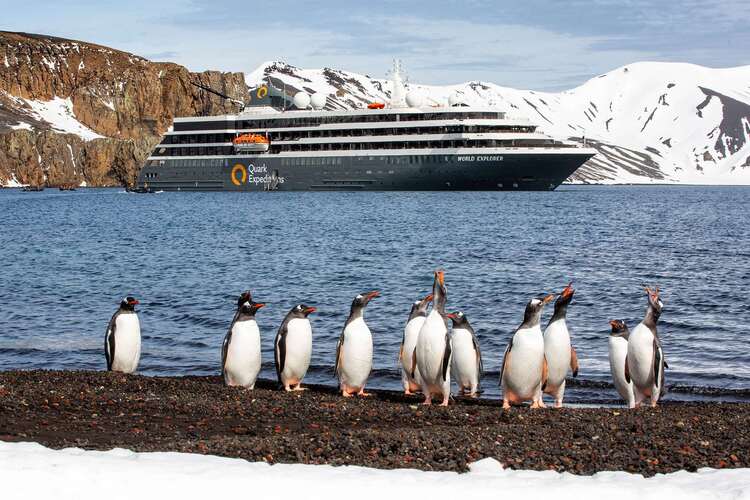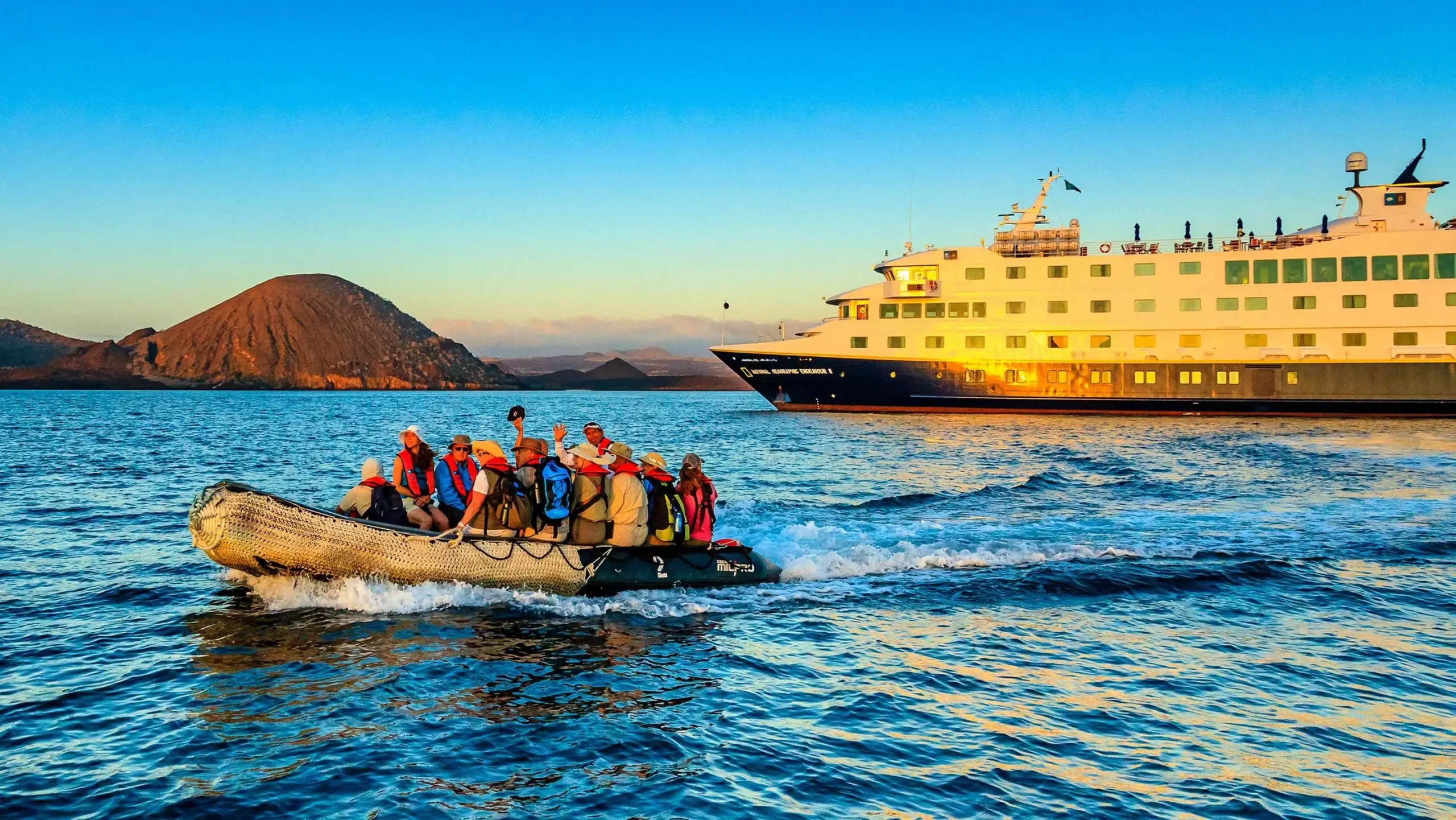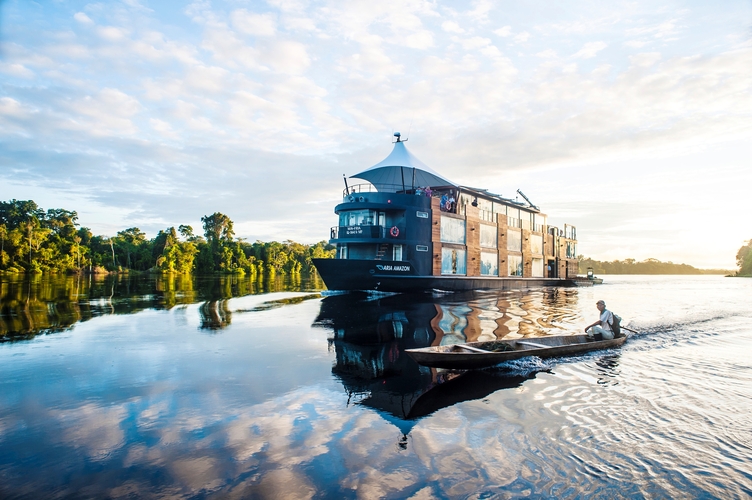“It was the most unforgettable journey of my life. Standing on the deck of a small ship in Antarctica, I watched penguins march across the ice while our naturalist explained the fragile balance of this ecosystem. I didn’t feel like a tourist. I felt like a participant in something much bigger.” – Travel By Hart expedition cruise client
Stories like this are becoming more common as travelers discover the power of expedition cruising. Unlike traditional mega-liners, expedition cruises offer a smaller, more immersive way to explore the world — and they’re quickly becoming the future of cruising thanks to their sustainable practices and purpose-driven design.
What Is Expedition Cruising?
Expedition cruises are different from traditional cruises in almost every way. Instead of carrying thousands of passengers, most expedition ships carry fewer than 200. They are built for exploration, with ice-strengthened hulls for polar voyages, advanced navigation systems, and equipment like kayaks and zodiacs for landing in remote locations.
These ships don’t focus on casinos or Broadway shows. Instead, they focus on education, conservation, and authentic connection to the destinations they visit. Naturalists, scientists, and local guides lead excursions, turning each journey into a classroom without walls.
Why Expedition Cruises Are More Sustainable
Travelers are increasingly aware of the environmental impact of cruising. Expedition cruise lines are addressing this challenge head-on with innovations that make their journeys significantly more sustainable than traditional large-ship cruising.
Here are some of the reasons why expedition cruising is considered lower impact:
- Smaller ships, smaller footprint – Fewer passengers means less strain on local communities and ecosystems.
- Advanced technology – Hybrid power, dynamic positioning systems (no anchoring on fragile seabeds), and better wastewater treatment.
- Local sourcing – Many lines source food locally and support local businesses in the regions they visit.
- Education and conservation – Onboard programs raise awareness and even involve guests in citizen science projects.
- Plastic reduction – Most leading expedition lines have eliminated single-use plastics.
Leaders in Sustainable Expedition Cruising
Here are some of the key cruise lines shaping the future of sustainable exploration:
- Lindblad Expeditions – Partnered with National Geographic, Lindblad has eliminated single-use plastics, supports global conservation projects, and integrates scientific research into its voyages.
- UnCruise Adventures – Known for its small ships and deep community connections, UnCruise emphasizes locally sourced food, “leave no trace” practices, and intimate group sizes.
- HX Expeditions – A pioneer in hybrid-powered ships, HX Expeditions is investing heavily in cleaner technology, reducing food waste, and aiming for carbon neutrality.
- Aurora Expeditions – As a Certified B Corporation, Aurora meets high standards for social and environmental responsibility and focuses on small-group polar exploration.
- Quark Expeditions – Their “Polar Promise” ensures strict environmental practices in both the Arctic and Antarctic, working with organizations like IAATO and AECO.
- Ponant – Through its “Blue Horizon” program, Ponant is investing in alternative fuels, eliminating single-use plastics, and supporting scientific research onboard.
- Aqua Expeditions – Specializing in the Amazon and Southeast Asia, Aqua sources 80% of its food locally, treats all wastewater, and partners with local communities on conservation.
- Atlas Ocean Voyages – Their “Conscious Navigation” program uses hybrid power systems, advanced waste treatment, and smaller eco-designed ships.
- Swan Hellenic – Known for its citizen science programs, Swan Hellenic also prioritizes sustainable sourcing, WWF-approved fish, and advanced emissions controls.
- Aranui Cruises – A unique hybrid cargo-passenger vessel serving French Polynesia, Aranui connects travelers with remote island communities while supporting their economies directly.
- Silversea Expeditions – Silversea has expanded its sustainability commitments with advanced waste management, partnerships with marine conservation programs, and eco-certified itineraries.
Challenges and the Path Forward
No cruise line is perfect, and even small ships rely on fuel to operate. But expedition cruise lines are leading innovation in sustainability, from hybrid engines and biofuels to new waste-management systems. As travelers demand more responsible options, these lines are proving that cruising can evolve.

Guests paddle kayaks through iceberg-filled waters in East Greenland — a signature experience of sustainable small-ship expedition cruising.
Why Expedition Cruising Is the Future
Expedition cruises align with what modern travelers want most: meaningful experiences that don’t come at the planet’s expense. They combine adventure, comfort, and education while minimizing impact and maximizing purpose.
For those who want to see the polar regions, explore remote islands, or experience fragile ecosystems with care, expedition cruises are the way forward.
Ready to Explore?
Are you ready to see the world in a way that protects what you love most? Let’s design your expedition cruise together. Reach out today, and I’ll help you find the small ship journey that matches your values and dreams.

Jessica Hart
Founder
Jessica is Sustainable Luxury Travel Advisor based in California. A Mother and seasoned traveler, she specializes in crafting custom journeys for curious explorers who seek meaningful adventures without compromising on comfort or style. Read what it's like to work with Jess.



